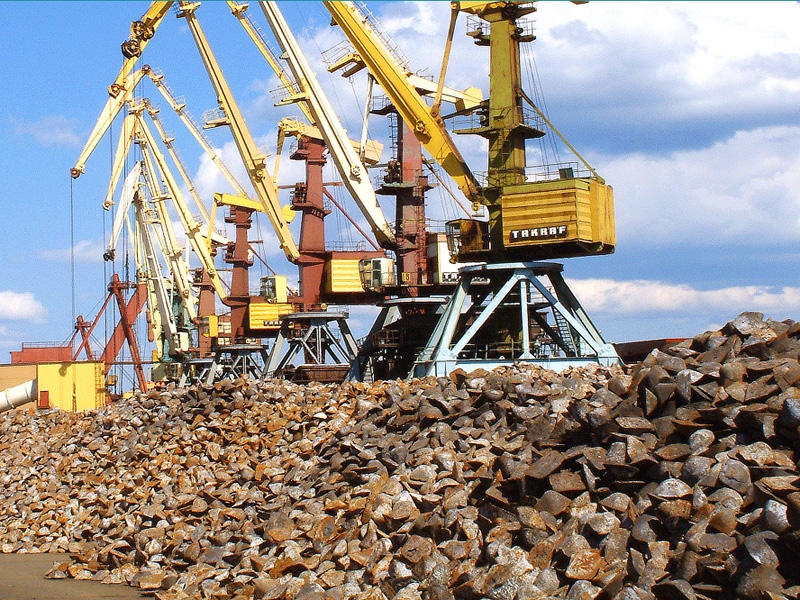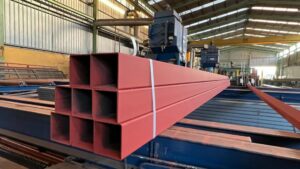Ferrous scrap and pig iron prices have stabilized even with a fresh round of iron ore declines this week, as record high global coking coal costs highlight the attractiveness of using low-carbon emissions scrap.
Iron ore’s price decline of around $28 week on week follows concerns China’s steel and pig iron production will weaken, pushing up scrap-to-iron ore ratios on Sept. 17 compared with Sept. 10.
The China import HRS101 scrap to iron ore 62% Fe price ratio rose to 5.7:1 on Sept. 17, up from 4.44:1 on Sept. 10. The Turkey HMS scrap to iron ore ratio increased to 4.36:1 on Sept. 17, from 3.42:1 on Sept. 10.
Lower iron ore prices may continue to exert pressure on ferrous scrap. However, continued increases in Chinese and global coking coal and met coke prices are adding to pig iron costs, which competes with scrap. Scrap can lower emissions via increasing use of recycled metals through the BF-BOF and EAF steel routes.
These were among prevailing ferrous raw materials trends this week in S&P Global Platts’ new low-carbon metals spreads and ratios – a suite of eight price references launched Aug. 13 that allow users to compare low-carbon feedstocks with traditional higher-carbon inputs.
The new spreads and ratios – underpinned by existing Platts assessments in hot-rolled coil steel, pig iron, ferrous scrap, iron ore, primary aluminum and scrap from the US, China, Turkey and the Black Sea region – were launched in response to market participants’ requests for tools to help quantify costs, manage risk, and support opportunities associated with the expansion of carbon-reduction strategies and increasing regulation.
Pig iron ratios to scrap stabilize
Weaker merchant pig iron prices earlier this month had made merchant pig iron relatively more price competitive with scrap, and the market has since stabilized.
Black Sea pig iron export prices to Turkey HMS scrap increased to a 1.10:1 ratio on Sep. 17, from a 1.07:1 ratio on Sept. 10, with both pig iron and scrap prices relatively weak compared with August’s averages.
In the US, import pig iron prices held at a 0.89:1 price ratio to MW No. 1 busheling scrap on Sept. 17 after weakening in early September.
Spot pig iron prices have again fallen faster than obsolete and prime grades. US mills remained quiet, waiting for prices to level out. Prices have also declined in pig iron trade from Brazil to China.
Pig iron and hot-briquetted iron enable greater ferrous scrap usage, helping meet steel quality specifications, by diluting scrap impurities such as copper.
The relative cost for metallics had fallen through August on weaker demand in markets such as the US and Turkey. Now, China is remerging as a spot buyer, as metallics sales into China were supported by high coking coal costs and scrap prices in China at relatively higher levels.
Pig iron’s carbon emissions are typically around 2.5 mt per mt and adjusted for yields, while some EAFs adapt their mix of metallics and scrap based on market prices, energy costs and operating plans.
US EAFs hold margins
US flat-rolled steel continued to be supported ahead of planned outages and with production volumes affected by tighter logistics and coking coal supplies.
Electric-arc furnace margins were steady during the week ended Sept. 17 as hot-rolled coil prices have remained level on subdued spot market activity on the back of planned mill maintenance and as consumers focus on 2022 contract discussions.
The Platts HRC-MW No. 1 busheling scrap spread and HRC-MW shredded scrap spread remained at strong levels through Sept. 17, supported by US HRC prices hovering around record levels.
Shredded scrap prices found support as exports started to stabilize, with Turkey as the major destination for US scrap exports.
The Platts HRC-MW No. 1 busheling scrap spread was $1,423.75/st on Sept. 17, and the HRC-MW shredded scrap spread also widened slightly to $1,543.84/st. Margins have risen 113% and 141% from the start of 2021, respectively.
Service centers and traders have been more willing to import steel based on the arbitrage opening up to the domestic market, especially as the market remains tight on supply from the planned outages. The recent drop in HRC futures may weaken interest to hedge for first-half 2022.
HRC lead times have started to come down slightly, and service center inventories have improved.
Prime scrap is expected to be under pressure again during the October scrap buy week as market sources anticipated prices could fall $20-$30/lt.
Mills were out late in the week looking for shredded scrap, supporting prices for the October buy week.
Given the wide differential between busheling and shredded, mills are looking at evolving technologies in order to better utilize obsolete grades of scrap, and market sources expect busheling’s premium to narrow further next month. Obsolete scrap pricing is currently anticipated to be steady to $20/lt higher, from September.
— Hector Forster and Nick Ruggiero






